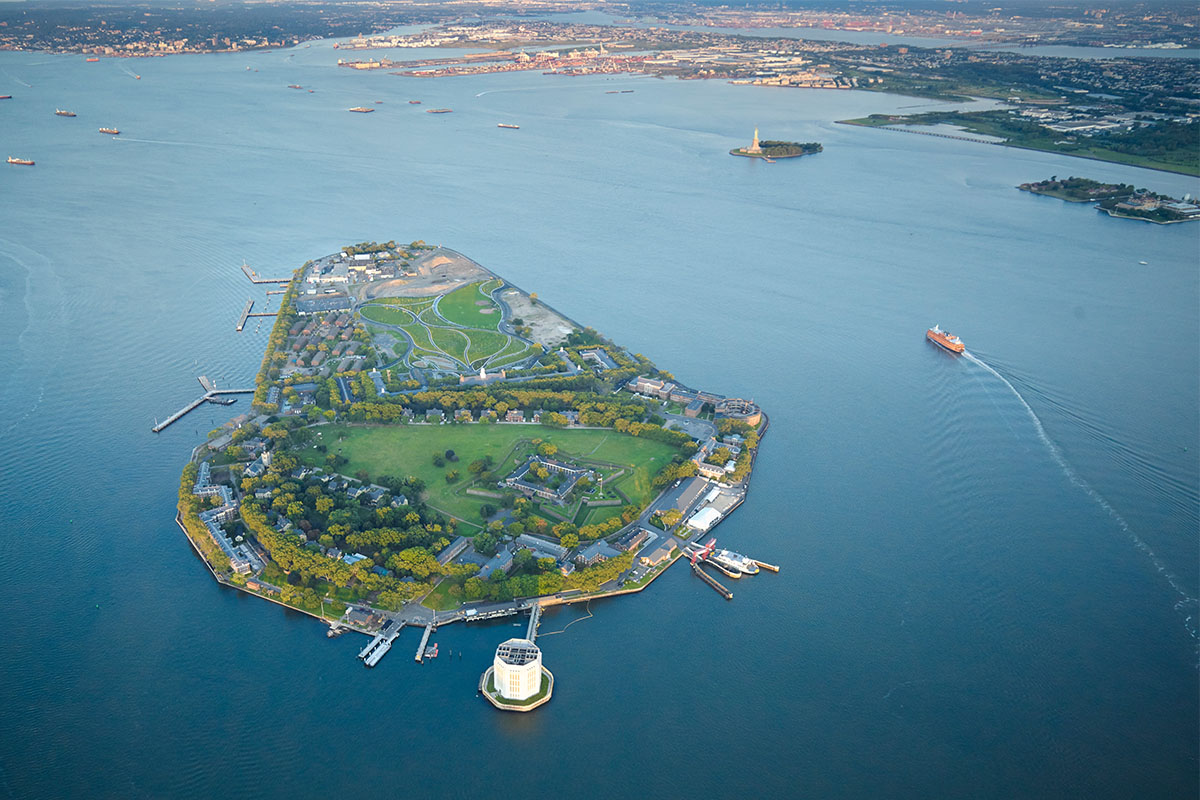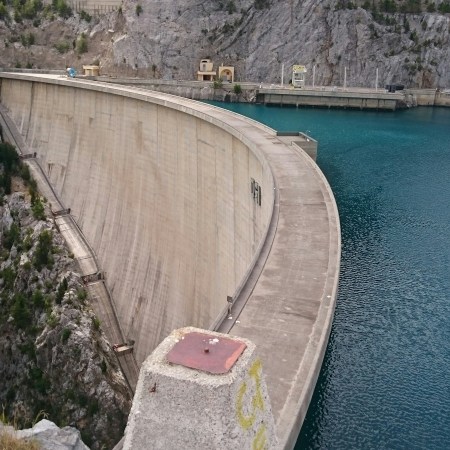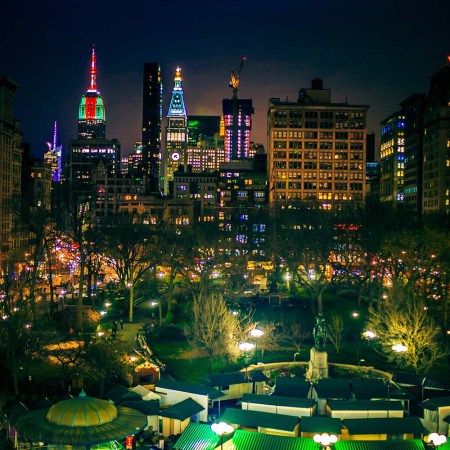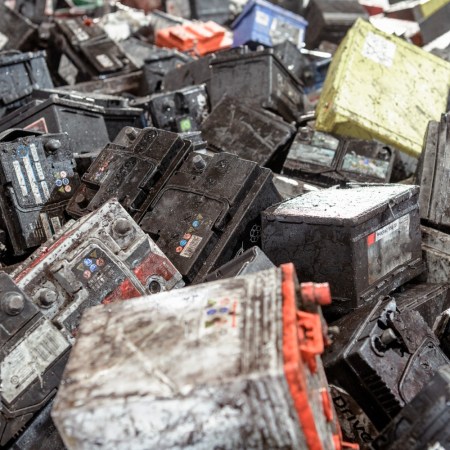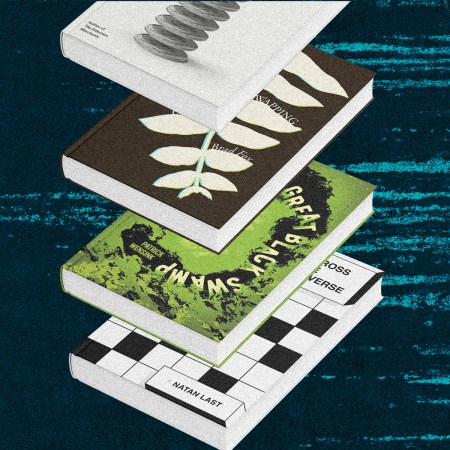Millions of Ellis Island immigrants entered New York City expecting to find streets “paved with gold.” They found them piled with oyster shells instead.
It’s difficult to overstate just how significant oysters once were to life in New York — it took nonfiction writer Mark Kurlanksky 325 pages to get the point across in his book The Big Oyster — but one jaw-dropping statistic should put the relationship into perspective: at the beginning of the 17th century, half of the world’s oyster population could be found in New York Harbor.
Oysters carts were the original hot dog stands. A few pennies could buy you a dozen. New Yorkers ate them in designated oyster cellars, exported them across the planet and even burned them down (mixing them with sand and water) to build walls of “tabby concrete.” During Gilded Gotham’s peak, when the ragged and the rich rarely crossed paths, oysters were an equalizer. Everyone ate them.
Which is one reason they’re now “functionally extinct” in New York Harbor. Overharvesting took its toll, and by 1927, the city had shuttered the last of its local fisheries. The other reason? Rampant, unchecked pollution. New York’s sewage system has been dumping untreated waste into its waterways for 150 years. Oyster beds that had once surrounded the very island immigrants were welcomed on, which had fed local peoples (like the Lenni Lenape tribe) for centuries, could no longer survive.
But this isn’t one of those clear-cut climate sob stories. Not if Billion Oyster Project can help it. Since 2014, the Governors Island-based nonprofit has done its best to bring that old Bruce Springsteen line to life: “Everything dies baby that’s a fact. But maybe everything that dies someday comes back.”
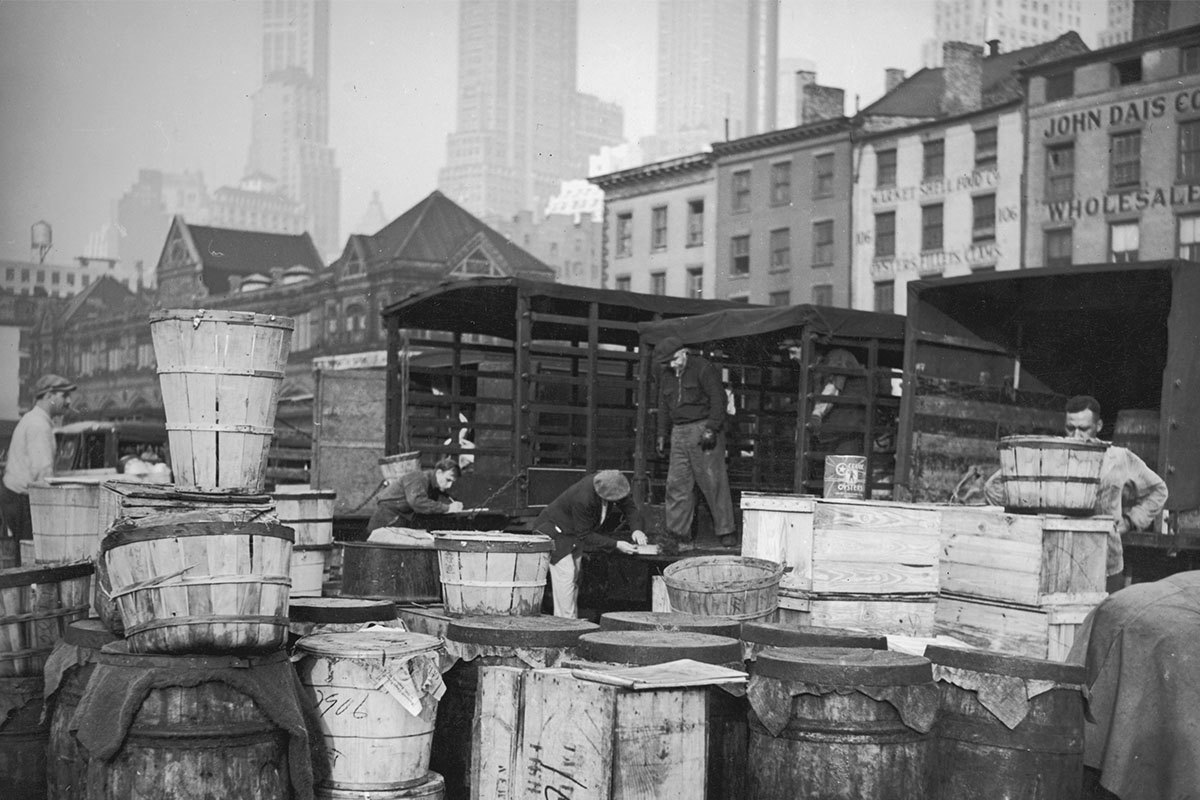
The goal is simple: one billion oysters restored to New York Harbor by 2035. On a smoggy Friday morning in May, though, all that our group leaders Johnny and Inca were looking for was 50,000.
I met them, along with with 10 other volunteers, at a shell pile on the eastern side of Governors Island in New York Harbor. It’s a crunchy, smelly, mollusk graveyard; it goes back 50 yards or so, and in places, is stacked eight feet or more into the air. There’s a lot going on on the 172-acre island these days — on my walk over I passed a few women maintaining fields of lavender, while deeper in, line cooks started cooking French fries for European tourists around 10 a.m. — but if you came here to rent a Citi Bike for the day, it’s possible that you’d speed right by Billion Oyster’s compound without blinking.
But it’s a busy place. Fifty-five restaurants throughout the city donate their discarded oyster shells to Billion Oyster. (The number soared past 70 before the pandemic, but the industry’s taken some hits.) The organization drives a van around the city, picking these post-slurp shells up en masse, before bringing them to the island in specially-marked blue buckets. Once there, they’re dumped at the very end of the pile, where they’ll sit for years.
Much of the work that Billion Oyster does involves making sure these shells are as clean (that’s to say: as receptive to oyster larvae, or “spat”) as possible. The easiest way to get that process going? Leave them at the mercy of nature. The shells get rained on, snowed on, crisped in the sun and blown around by the wind. Insects pick them clean. Eventually, they’re ready for reincarnation.
I volunteered with Billion Oyster Project for four hours last week. It isn’t apple picking, that’s for sure. Amongst some basic household chores — sweeping, folding tarps, picking up trash, moving boxes around — I personally helped kick off a new life cycle for thousands of oysters.
Johnny and Inca showed us how to fill wire crates halfway with shells, how give them a good shake to rinse out the dirt and leaves, then drop them into garbage tubs full of a water for a final soak. From there they go to a plastic crate, which is sorted into a pallet. One-thousand oysters to a plastic crate, 20 plastic crates to a pallet. Over the course of the day, we filled up four pallets. And that included a lengthy break for lunch, during which I managed to walk the full length of the island.
Exceeding our group goal put Billion Oyster’s pipe dream into perspective; perhaps restoring New York Harbor with oyster beds is within reach? I asked Johnny where the organization was in relation to it titular endgame, to which he replied 80 million. A long way, then. But that ignores the fact that pandemic threw a huge wrench into this operation. It’s just not that Billion Oyster couldn’t recruit volunteers to donate some time on a Friday; for a while, there were no oyster shells coming in, because there was no one out at restaurants to eat the oysters.
Besides, the success of Billion Oyster is closely intertwined with the work of students at New York Harbor School, perhaps one of the most unique public schools in American history, which has called Governor’s Island home since 2006. Every aspect of the NYHS curriculum is related to marine life; the concept for Billion Oyster was born from the efforts of the school’s earliest students, who started placing larvae on shells and releasing them into the Hudson and East Rivers as early as 2008.
Remote learning was tricky enough when teachers were trying to get kids to put their phones down long enough to learn how to balance equations. It’s a special sort of difficult when kids are used to being in wetsuits and flippers. Now that things are trending normal again, though, and Billion Oyster has enjoyed both word-of-mouth support and functional assistance (last year, Morgan Stanley built the nonprofit a cloud-based platform that will allow it to “supervise oyster growth”), Billion Oyster expects to add 100 million oysters to the Greater New York ecosystem in 2022 alone.
It will be a minute before any of the shells I prepared will find a home in the reef at Brooklyn Bridge Park, or Coney Island Creek, or any of the 15 other field stations Billion Oyster monitors and maintains in the region. Now that they’ve completed their multi-year sentence in the pile, they’ll need six weeks to facilitate the growth of baby oysters in specialized tanks. This can’t happen in the wild, unfortunately; they wouldn’t stand a chance against the chemicals that are still filtering around the harbor. But if released into reefs once strong, the nursery (comprised of countless cages) can thrive.
It’s plant-a-tree, ocean edition. And oyster bed restoration isn’t just a feel-good story; it’s a functional policy, an asset in New York’s fight against pollution and climate change. A single, humble oyster can filter 50 gallons of water a day. Clinging to cages and mesh bags, oysters act as “ecosystem engineers” — they strain nefarious matter from subtidal habitats, dragging particles to their gills, beating them with their cilia and depositing them as harmless packages on the harbor floor.
They don’t stop there. Oysters are also considered “habitat-builders,” capable of ushering in the growth and return of vegetation or fish that have long left an ecosystem. Untouched by mankind — let alone one of the largest human settlements ever — the collision of salt and freshwater systems makes for vibrant, interdependent environs. Given time, bivalves can also buttress coastlines, mitigating the impacts of erosion, and act as shock absorbers in the event of superstorms and rising sea levels (an issue that hasn’t escaped the minds of New Yorkers since Hurricane Sandy).
I asked Johnny the biggest challenge standing in the way. As of now, even a billion oysters are no match for the expected trillion-plus dollars it would take to update New York’s sewage system. You may be surprised (or if you live in certain neighborhoods, not at all) to know that 60% of the city is still connected to the original combined sewer overflow system, which was installed in the 1800s and built in large parts with wood. There are nearly 500 outfall sites around New York Harbor, where water mixes with waste on rainy days. This sludge heads straight for the waterways the oysters are now working so hard to clean.
There have been a number of proposals in recent years from the city. Billion Oyster, along with representatives from Riverkeeper and the SWIM Initiative, have called them a drop in the bucket. That doesn’t mean the oysters can’t get to work, only that their work will be much more strenuous, and much less effective, until hundreds of millions of gallons of sewage aren’t overflowing into the harbor each year. Everything will just take longer, basically. It’s a game of catch-up. Look to Chesapeake Bay, deservedly credited with its own oyster bed restoration program. And even still, excess sediment that once took the local oyster population three days to filter now takes a year.
By the end of my day with Billion Oyster, I was expertly picking clam shells (black-purple, oblong) out of crates and chucking them to the side. (They can interfere with larvae maturation.) I knew to prioritize quality over quantity in the crates, had a preferred section of the pile where shells were at their most white and windblown, and sorted almost a full table setting in trash, setting aside a fork, a spoon and small vial of hot sauce.
At a time when environmental threats often feel outsized and overwhelming, I recommend looking for ways to donate your time instead of your money. By the end of the day, standing at the prow of the Governors Island ferry, my hands smelling like the bottom of the ocean floor, I allowed myself to feel some hope. We’ve long thought it inevitable that living in big cities should come with deleterious trade-offs. It’s felt easier to self-defensively mock our many issues — traffic, vermin, crumbling infrastructure, disgusting rivers — than consider that there might actually be solutions.
These solutions don’t have to include nanotechnology from Silicon Valley labs. Sometimes they just need spare buckets and some willing volunteers. Don’t expect the city to ever build churches from spare oyster shells again, but don’t be surprised, if in a hundred years, New Yorkers are swigging oysters that were sustainably-harvested a short ferry ride away.
This article appeared in an InsideHook newsletter. Sign up for free to get more on travel, wellness, style, drinking, and culture.
